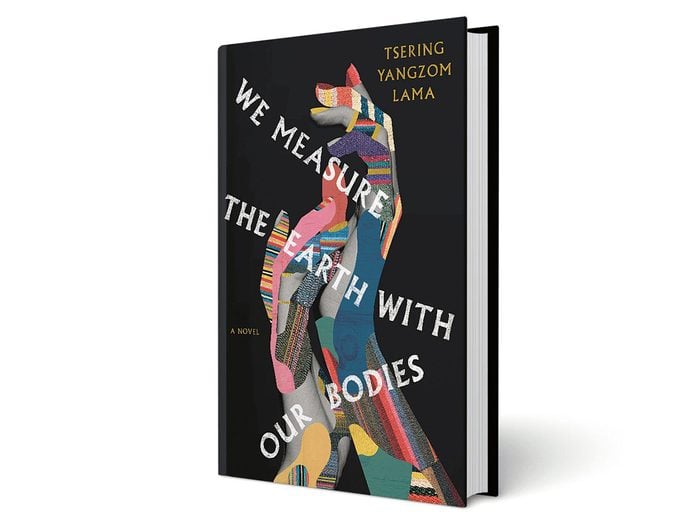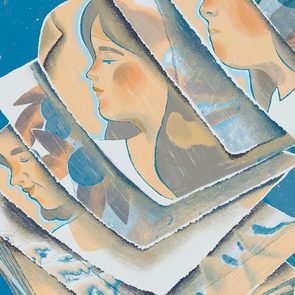Tsering Yangzom Lama Explores a Life in Exile For Her Debut Novel

Inspired by her own family's flight from Nepal in the 1960s, Vancouver author Tsering Yangzom Lama tells the story of two sisters struggling to fit into their new life in Toronto.
Many Tibetans have never set foot in their homeland, and for much of her life, author Tsering Yangzom Lama was one of them. In the early 1960s, after the fall of Tibet to Chinese forces, Lama’s parents and grandparents fled their country of origin, leaving their grassland villages, crossing the Himalayas and settling in Nepal. Lama grew up in Kathmandu, where she could see Mount Everest from her school bus, and later lived in New York, Toronto and Vancouver. When Lama was 26, she hiked for seven days to the border separating Tibet and Nepal, marked by an army camp, where she saw her homeland for the first time. “What stretched before us was the land and the sky. On and on, across my mother’s village, across my father’s ancestral pastures. Across the prison camp where my great-uncle died, where many heroes remain bound,” she wrote in an essay about the experience.
We Measure the Earth with Our Bodies, Lama’s debut novel, is inspired by her family’s long-ago flight, documenting the experiences of statelessness that followed them across borders. The story revolves around two sisters, Lhamo and Tenkyi, who are preteens when the Dalai Lama flees Tibet for India after a failed Tibetan uprising against Chinese occupation in 1959. The following year, the girls’ mother—who serves as the village oracle—decides they must leave their homeland. They travel on foot to a series of makeshift camps, sleeping in yak hair tents and foraging for food and water, eventually losing their parents to illness and despair. Then comes a longer exile in Nepal. Finally, Tenkyi lands in Toronto, where she’s later joined by Lhamo’s daughter, Dolma, in the west-end neighbourhood of Parkdale, where refugees have clustered in a so-called Little Tibet. The novel jumps between time periods and locations. Each new spot, they find, is a diluted version of the original. “A copy of a copy of home,” Dolma says of Toronto and Little Tibet.
The novel follows the sisters and their loved ones as they live together and apart, always in exile. Lama’s writing is gorgeous, sketching a world both impressionistic and richly detailed, especially when filtered through the perspective of teen girls: to Lhamo’s eyes, for example, her mountain camp is “a buffalo sunning on a hill, revealing everything,” while a Kathmandu refugee camp is a dense forest of alleys and twisting paths. Her depiction of Toronto, meanwhile, crisply challenges Canada’s “It’s a Small World” self-image. “It soon dawned on me that paperwork alone wouldn’t be enough to make us belong,” Dolma says. “We wore our difference on our bodies, not just in our dark hair and brown skin but in our posture, the slower, foreign rhythm of our steps.” Instead of jolly diversity, she encounters casual colonialism. One of the novel’s central mysteries involves the disappearance and reappearance of a ku, or Nameless Saint, a small, ancient statue made of mudstone from Tibet. One evening, decades after the ku has vanished from the family’s camp, Dolma attends a cocktail party at the home of a wealthy art collector in Toronto’s plush Rosedale neighbourhood. There, she discovers none other than the priceless ku, purchased from an anonymous antiques dealer in Nepal. To the collector, the statue is a trophy. To Dolma, it’s her family’s last physical link to their homeland, and she goes to drastic lengths to get it back.
The novel spans decades and continents, its characters infused with both wistful homesickness and fury at their own displacement. The farther they get from Tibet, the farther they grow from each other, and Lama makes you viscerally feel this longing for belonging, the same thing she felt standing at the border between Tibet and Nepal at age 26. The result is something rare in a book of this scale: a novel that’s as moving as it is ambitious.
Next, find out what makes musician Martha Wainwright’s fiery memoir a must-read.






